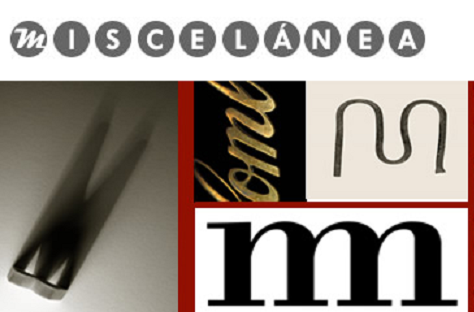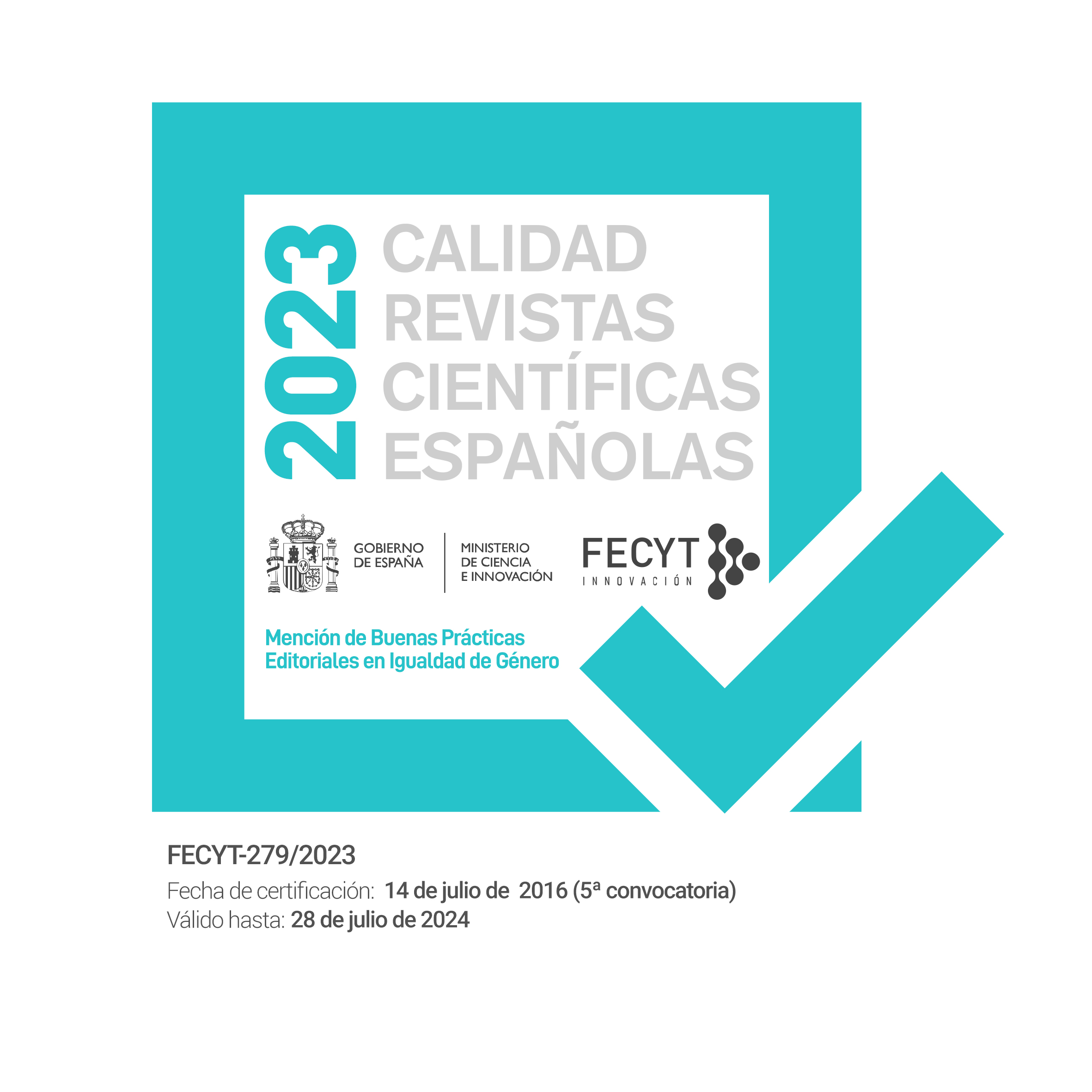The Spoken Core of British English: A Diachronic Analysis Based on the BNC
DOI:
https://doi.org/10.26754/ojs_misc/mj.20089708Keywords:
core vocabulary, corpus, diachrony, contact, frequencyAbstract
Our research focuses on two aspects of the evolution of contemporary spoken core vocabulary in British English based on a frequency analysis carried out using the demographic-spoken section of the spoken subcorpus of the British National Corpus (BNC) which contains 4 million words (the whole BNC contains over 100 million words). On the one hand, we examine the impact on the core of contact with other languages and, on the other, lexical innovation throughout the history of the English language. Ours is a quantitative study that uses as its starting point contemporary British core vocabulary. We define core as opposed to non-core by looking exclusively at the frequency of a word as several linguistic studies have proposed. Our analysis, which, to a certain extent, follows up on that carried out in Fuster (2007) questions the hypothesis, in several diachronic studies, that the spoken core is immune to linguistic contact, or that it is quite impermeable to innovation and resists change.
Downloads
References
Aronoff, Mark and Kirsten Fudeman. 2005. What is Morphology? Malden Oxford/Victoria: Blackwell Publishing.
Berndt, Rolf. 1984. A History of the English Language. Leipzig: VEB Verlag Enzyklopädie.
Bird, N. 1987. “Words, Lemmas and Frequency Lists: Old Problems and New Challenges”. (Parts 1& 2). Al-manakh, 6: 42-50.
Brinton, Laurel J. and Leslie K. Arnovick. 2006. The English language: A Linguistic History. Oxford/New York: Oxford U. P.
Campbell, Lyle. 2003. “How to Show Languages are Related: Methods for Distant Genetic Relationships”. In Joseph, B. D. and R. D. Janda. (eds.) The Handbook of Historical Linguistics. Malden: Blackwell Publishing: 262-282.
Fuster, Miguel. 2007. “Renewal of Core English Vocabulary: A Study Based on the BNC”. English Studies, 88 (6): 699-723.
Fuster, Miguel and María Mar Martí. 2000. “Contact and Basic English Vocabulary”. Studies in English Language and Linguistics, 2: 97-115.
Goddard, Cliff. 2002. “The Search for the Shared Semantic Core of all Languages”. In Goddard, C. and A. Wierzbicka. (eds.) Meaning and Universal Grammar - Theory and Empirical Findings. Vol I. Amsterdam: John Benjamins: 5-40.
Goddard, Cliff and Anna Wierzbicka (eds.) 2002. Meaning and Universal Grammar- Theory and Empirical Findings. Vol I. Amsterdam: John Benjamins.
Grzega, Joachim. 2003. “Borrowing as a Wordfinding Process in Cognitive Historical Onomasiology”. Onomasiology Online, 4: 22-42.
Gudschinsky, Sarah C. 1956. “The ABC’s of Lexicostatistics (Glottochronology)”. Word, 12: 175-220.
Halliday, M.A.K. and Rukaya Hasan. 1976. Cohesion in English. London: Longman.
Haspelmath, Martin. 2003. “Loanword Typology: Steps towards a Systematic Cross-linguistic Study of Lexical Borrowability”. [http://email.eva.mpg.de/~haspelmt/LWT-text.pdf].
—. 2004. “How Hopeless is Genealogical Linguistics, and How Advanced is a Real Linguistics?”. Studies in Language, 28 (1): 209- 223.
Hoffman, Sebastian. 2004. “Are Low-Frequency Complex Prepositions Grammaticalized? On the Limits of Corpus Data and the Importance of Intuition”. In Lindquist, H. & C. Mair. (eds.) Corpus Approaches to Grammaticalization in English. Amsterdam/ Philadelphia: Benjamins: 171-210
Horn, Ernest. 1926. A Basic Writing Vocabulary. Iowa City: University of Iowa.
Hughes, Geoffrey. 2000. A History of English Words. Oxford: Blackwell.
Jespersen, Otto. 1967. Growth and Structure of the English Language. Oxford: Blackwell.
Kilgariff, Adam. 1997. “Putting Frequencies in the Dictionary”. International Journal of Lexicography, 10 (2): 135-155.
Labov, William. 2001. Principles of Linguistic Change: Social Factors. Malden Massachusetts: Blackwell.
Lass, Roger. 1987. The Shape of English: Structure and History. London: J.M. Dent & Sons Ltd.
Lee, David. 2001. “Defining Core Vocabulary and Tracking its Distribution across Spoken and Written Genres: Evidence of a Gradience of Variation from the British National Corpus”. Journal of English Linguistics, 29 (3): 250-278.
Leech, Geoffrey, Paul Rayson and Andrew Wilson. 2001. Word Frequencies in Written and Spoken English: Based on the British National Corpus. Essex: Longman. [Also companion website http://www.comp.lancs.ac.uk/ucrel/bncfreq/].
Lutz, Angelika. 2002. “When did English Begin?”. In Fanego, T., B. Méndez-Naya, and E. Seoane. (eds.) Sounds, Words, Texts and Change. Amsterdam and Philadelphia: John Benjamins: 145-171.
McCarthy, Michael. 1990. Vocabulary. Oxford: Oxford U. P.
—. 1999. “What Constitutes a Basic Vocabulary for Spoken Communication?”. Studies in English Language and Linguistics, 1: 233-250.
—. 2003. “Talking Back: ‘Small’ Interactional Response Tokens in Everyday Conversation”. Research on Language and Social Interaction, 36 (1): 33-63.
— and Ronald Carter. 2003. “What Constitutes a Basic Spoken Vocabulary?”.Research Notes, 13: 5-8 [http://www.cambridgeesol.org/rs_notes/rs_nts13.pdf].
McMahon, April. 2004. “Language, Time and Human Histories”. In Brisard, F. S. D’Hondt and T. Mortelmans. (eds.) Language and Revolution/ Language and Time. Universiteit Antwerpen: Antwerp Papers in Linguistics,106: 155-171.
Nation, I.S.P. 2001. Learning Vocabulary in Another Language. Cambridge: Cambridge U. P.
O’Keeffe, Anne, Michael McCarthy and Ronald Carter. 2007. From Corpus to Classroom: Language Use and Language Teaching. Cambridge: Cambridge U. P.
Plag, Ingo. 2003. Word-formation in English. Cambridge: Cambridge U. P.
Pyles, Thomas. 1971. The Origins and Development of the English Language. New York: Harcourt Brace Jovanovich.
Rankin, Robert L. 2003. “The Comparative Method”. In Joseph, B. D. and R. D. Janda. (eds.) The Handbook of Historical Linguistics. Malden: Blackwell Publishing: 183-213.
Rothwell, William. 1998. “Anglo-Norman at the (Green)Grocer’s”. French Studies, 52 (1): 1-16.
Sinclair, John. 1991. Corpus, Concordance, Collocation. Oxford: Oxford U. P.
Stubbs, Michael. 1996. Text and Corpus Analysis: Computer-assisted Studies of Language and Culture.Oxford: Blackwell.
—. 2002. Words and Phrases: Corpus Studies of Lexical Semantics. Oxford: Blackwell.
Thomason, Sarah G. 2001. Language Contact: An Introduction. Edinburgh: Edinburgh University Press.
—. 2003. “Contact as a source of language change”. In Joseph, B. D. and R. D. Janda (eds.) The Handbook of Historical Linguistics. Malden: Blackwell Publishing: 687-712.
West, Michael. 1953. A General Service List of English Words. London: Longman.
Wierzbicka, A. 2006. “Anglo Scripts against ‘Putting Pressure’ on the Other People and their Own Linguistic Manifestations”. In Goddard, C. (ed.) Ethnopragmatics: Understanding Discourse in Cultural Context. Berlin: Mouton de Gruyter: 31-63.
Downloads
Published
How to Cite
Issue
Section
License
Copyright (c) 2008 Miguel Fuster Márquez, Barry Pennock Speck

This work is licensed under a Creative Commons Attribution-NonCommercial 4.0 International License.


